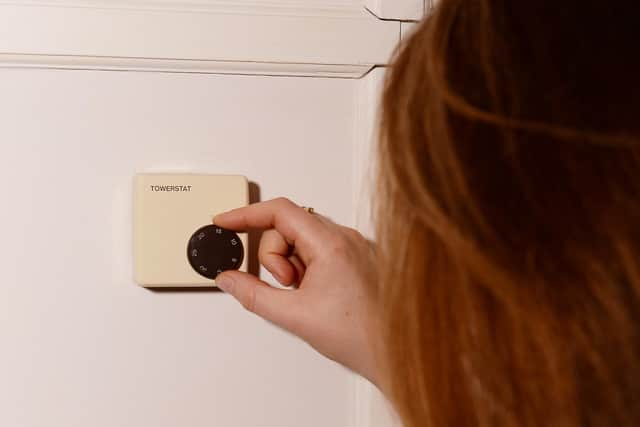Scale of Preston families struggling with their bills
and live on Freeview channel 276
More than 9,000 households in Preston are struggling to pay their fuel bills.
Campaigners say the number of people across England unable to keep their homes warm is a “national scandal”.
Advertisement
Hide AdAdvertisement
Hide AdAn estimated 9,181 Preston households experienced fuel poverty in 2019, the latest Department for Business, Energy and Industrial Strategy data shows.


At 15.1 per cent of those in the area, that was slightly above the England average of 13.4 per cent.
A household is considered to be fuel poor if they live in a property with low energy efficiency and would be pushed below the poverty line by housing costs and the energy bills needed to have a warm, well-lit home.
Nationally, around 3.2m households were estimated to be fuel poor in 2019.
Advertisement
Hide AdAdvertisement
Hide AdProjections published by BEIS suggest this figure will drop by 180,000 between then and 2021, but fuel poverty charity National Energy Action said there has been too little progress in recent years.
“Fuel poverty is a national scandal and affects people in every part of the country,” said NEA’s chief executive Adam Scorer.
He said this wasn’t helped by the demise of schemes like the green homes grant, which was launched in September to help homeowners install energy efficient improvements but was recently scrapped having helped less than 10% of the homes it aimed to nationally.
But Mr Scorer added that there was a “huge opportunity” to tackle fuel poverty and climate change together, and called for large government programmes to help people on the lowest incomes and in the draughtiest homes.
Advertisement
Hide AdAdvertisement
Hide AdAcross different neighbourhoods in Preston, fuel poverty rates ranged from 3.6 per cent to 32 per cent in 2019.
But these estimates are based on small sample sizes and so should be treated with caution, said BEIS.
Overall, there were seven council areas across England with a fuel poverty rate of more than 20 per cent, while there were two places – Wokingham and Hart in the South East – where fewer than five per cent of households were fuel poor.
Simon Francis, co-ordinator of the End Fuel Poverty Coalition, said variation in fuel poverty levels nationally was partly down to national policy and the state of historical housing stock.
Advertisement
Hide AdAdvertisement
Hide AdBut he said councils also have a “huge role to play” in alleviating fuel poverty, including by improving local housing and using central government grants to help those most at risk.
"Crucially, local authorities can ensure better enforcement of existing regulations on energy efficiency and property standards in the private rented sector,” he added.
The Local Government Association said councils are committed to improving home energy efficiency and tackling fuel poverty, but called for longer-term funding to help them achieve national net zero ambitions.
An LGA spokesman added: “Councils should also be given greater flexibility around introducing landlord licensing schemes, so they can ensure private rented sector housing is also energy efficient.”
Advertisement
Hide AdAdvertisement
Hide AdA government spokeswoman said 1.3m fewer low-income households are living in the least energy efficient homes compared to 2010.
“We are committed to levelling up all regions of the UK, ensuring nobody goes cold in their own home, no matter where they live," she added.
"That’s why we recently announced £500m in funding for local authorities to upgrade homes of thousands of low-income households across the country, many in deprived areas.”